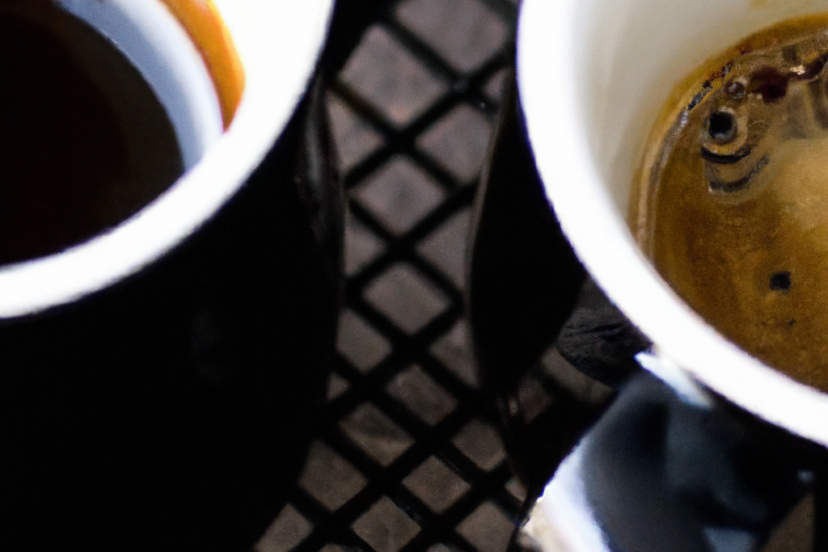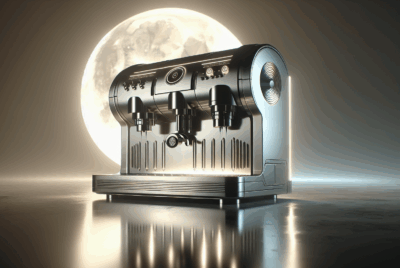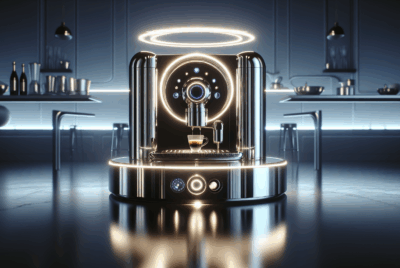Espresso vs. Coffee: Exploring the Differences
As an Amazon Associate, I earn from qualifying purchases, at no additional cost to you. Disclaimer
I’ve always had a fondness for a good cup of joe, but recently I found myself intrigued by the world of espresso. As I traveled deeper into this caffeinated realm, I stumbled upon a fascinating question: what exactly is the difference between espresso vs. coffee?
It turns out, there’s more to it than just a brewing method. From the flavor profile to the caffeine content, these two beloved beverages have their own unique characteristics that set them apart. So let’s take a closer look and discover the nuances that distinguish an espresso from a regular cup of coffee.

Basic Definitions
Espresso
Espresso is a concentrated and strong form of coffee that is made by forcing hot water through finely ground coffee beans under high pressure. This brewing method results in a small shot of intense, aromatic coffee with a distinctive flavor profile. Espresso is the foundation for various coffee-based drinks such as cappuccinos, lattes, and macchiatos.
Coffee
Coffee, on the other hand, refers to the beverage that is made by brewing roasted coffee beans with hot water. Unlike espresso, coffee is typically brewed using a slower drip method or immersion method, allowing the water to extract the flavor from the coffee grounds over a longer time.
Espresso vs. Coffee: Brewing Method
Espresso
To brew espresso, a specialized espresso machine is used. The machine forces hot water, typically around 195 to 205 degrees Fahrenheit, through a compacted puck of finely ground coffee at a pressure of around 9 bars. This high-pressure extraction process results in a highly concentrated shot of coffee, often served in small 1 to 2-ounce portions.
Coffee
Brewing coffee involves various methods such as drip brewing, French press, pour-over, and cold brew. These methods generally involve combining coarser coffee grounds with hot water, allowing the water to slowly extract the flavors and aromas over a longer period. The resulting coffee is often enjoyed in larger servings compared to espresso.
Espresso vs. Coffee: Grind Size
Espresso
Espresso requires a very fine grind size to optimize the extraction process. The fine grind ensures that the water can pass through the coffee puck evenly and extract the desired flavors, oils, and caffeine. The fine grind also promotes a shorter brewing time, contributing to the intense and concentrated flavor profile of espresso.
Coffee
Coffee for traditional brewing methods like drip brewing or pour-over requires a coarser grind size compared to espresso. The coarser grounds allow the water to flow through more slowly, ensuring proper extraction without introducing excessive bitterness. The grind size can be adjusted based on personal preferences, brewing equipment, and the desired intensity of the coffee flavor.
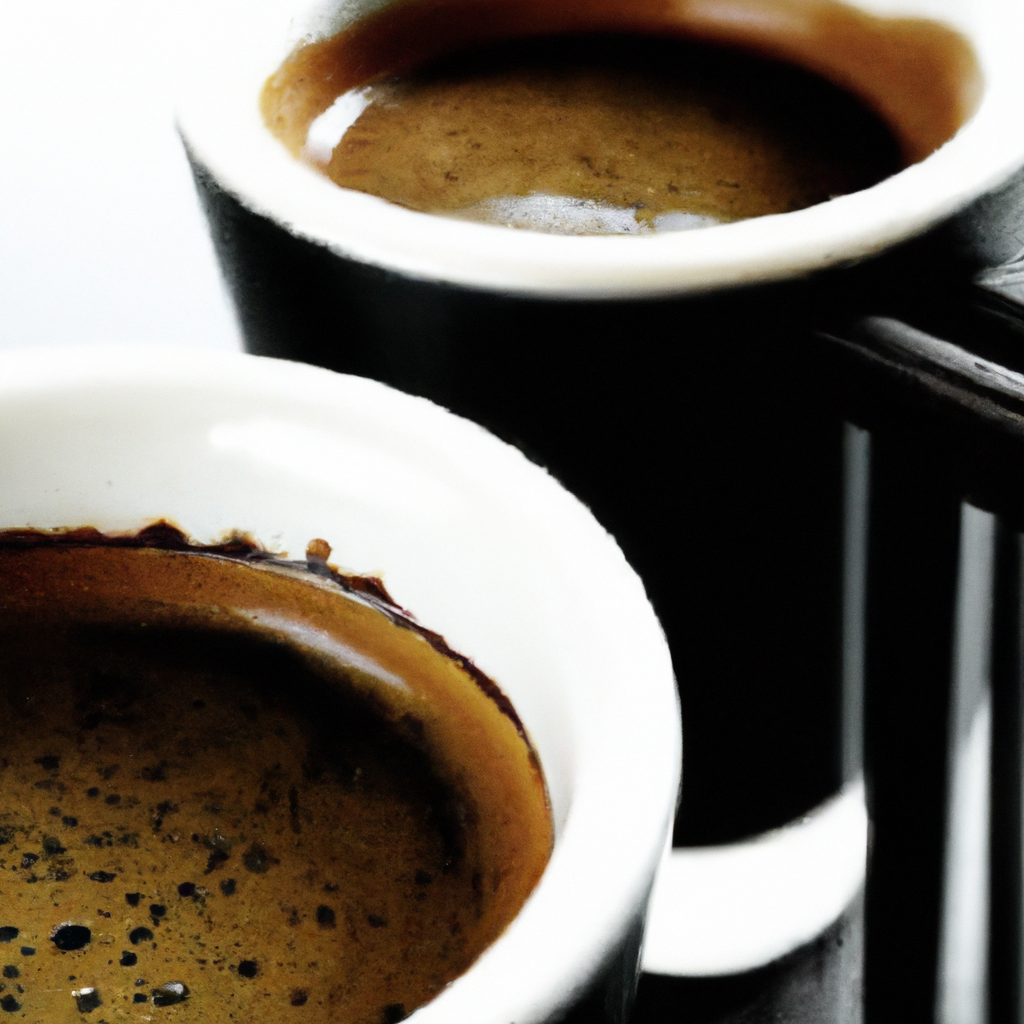
Espresso vs. Coffee: Roasting
Espresso
Espresso blends are often roasted to a darker level compared to coffee intended for traditional brewing methods. The darker roast brings out the natural oils and sugars in the coffee beans, resulting in a bolder and more robust flavor. The rich and caramel-like notes of a darker roast complement the strong and intense nature of espresso.
Coffee
Coffee beans used for traditional brewing methods can be roasted to various levels to achieve different flavor profiles. Lighter roasts preserve the delicate and nuanced flavors of the coffee beans, highlighting their origin characteristics. Medium roasts offer a balanced flavor with a slight sweetness, while darker roasts impart bolder flavors and greater body.
Espresso vs. Coffee: Caffeine Content
Espresso
Contrary to popular belief, espresso does not necessarily have more caffeine than regular coffee. While espresso shots are concentrated, they are served in smaller quantities, typically ranging from 30 to 50 milliliters. On average, a single shot of espresso contains about 63 milligrams of caffeine. However, since it is consumed quickly, the caffeine is often absorbed more rapidly by the body, resulting in a quick burst of energy.
Coffee
Regular coffee, when brewed following standard guidelines, generally contains more caffeine than a single shot of espresso. An 8-ounce cup of drip-brewed coffee typically contains around 95 milligrams of caffeine. However, the overall caffeine content in coffee can vary depending on factors such as brewing time, coffee bean type, and serving size.
Espresso vs. Coffee: Flavor and Intensity
Espresso
Espresso is known for its intense flavor profile. It often exhibits a rich and full-bodied taste, with notes of chocolate, caramel, and even fruitiness depending on the specific coffee bean used. The concentrated nature of espresso, combined with the high-pressure extraction method, allows for a strong and robust flavor that lingers on the palate.
Coffee
The flavor of coffee brewed using traditional methods can vary widely depending on factors such as the origin of the beans, roast level, and brewing technique. Generally, brewed coffee has a milder flavor in comparison to espresso. It offers a more nuanced taste with varying levels of acidity, bitterness, and sweetness, allowing for a diverse range of flavors to be enjoyed.
Espresso vs. Coffee: Serving Size
Espresso
Espresso shots are typically served in small cup sizes, ranging from 1 to 2 ounces. These concentrated shots are meant to be enjoyed quickly and are often consumed as standalone or as a base for specialty coffee drinks. The small serving size allows for a potent and intense coffee experience in a short amount of time.
Coffee
Coffee brewed using traditional methods is generally served in larger quantities, typically in 8-ounce cups or larger. The larger serving size allows for a more leisurely drinking experience, savoring the flavors over a longer period. It is common to enjoy multiple cups of coffee throughout the day, while a single serving of espresso is often sufficient.
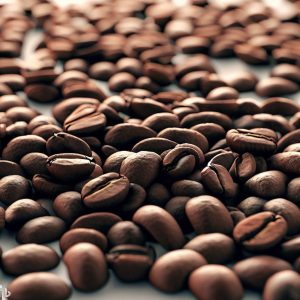
Espresso vs. Coffee: Preparation Time
Espresso
Espresso machines are designed for efficiency, allowing for relatively quick preparation times. From grinding the beans to pulling a shot, the entire process can be completed within a minute or two. The high-pressure extraction method ensures a rapid brew, resulting in a minimal wait time for those seeking a quick caffeine fix.
Coffee
The preparation time for coffee brewed using traditional methods can vary depending on the chosen brewing technique. Drip brewing with an automatic coffee maker typically takes around 5 to 7 minutes, while manual methods like pour-over or French press can require a bit more time for proper brewing and extraction. The slower process often appeals to those who enjoy a more relaxed and hands-on approach to coffee preparation.
Espresso vs. Coffee: Equipment
Espresso
Brewing espresso typically requires specialized equipment in the form of an espresso machine. These machines utilize high pressure, precise temperature control, and built-in grinders to achieve the perfect espresso shot. High-quality espresso machines are often found in coffee shops and cafes, but there are also more affordable options available for home use.
Coffee
For brewing traditional coffee, there is a wide variety of equipment to choose from based on personal preference and convenience. Automatic coffee makers, manual pour-over drippers, French presses, and cold brew systems are common options. Each method offers a unique brewing experience and allows customization of the brewing parameters to achieve desired flavors.
Popular Drinks
Espresso
Espresso serves as the foundation for numerous popular coffee drinks. Some of the well-known espresso-based beverages include:
- Cappuccino: Equal parts espresso, steamed milk, and milk foam, often dusted with cocoa or cinnamon.
- Latte: A shot of espresso with a generous amount of steamed milk, often topped with foamed milk and flavored syrups.
- Macchiato: Espresso topped with a small amount of foamed milk, creating a layered drink with the rich flavor of espresso.
Coffee
In the world of traditional coffee brewing, there are also various popular drinks that showcase the versatility of coffee. Some examples include:
- Americano: A shot or two of espresso diluted with hot water, creating a beverage that resembles regular brewed coffee.
- Pour-Over Coffee: A manual brewing method that involves pouring hot water over coffee grounds in a filter, resulting in a clean and vibrant cup of coffee.
- Cold Brew: Coffee that is steeped in cold or room temperature water for an extended period, producing a smooth and less acidic coffee concentrate.
In conclusion, while espresso and coffee both come from the same origin, their differences lie in the brewing methods, grind size, roasting levels, flavor profiles, serving sizes, preparation times, caffeine content, and equipment used. Espresso offers a concentrated, intense, and fast-paced coffee experience, while coffee brewed using traditional methods allows for a more relaxed and customizable approach. Whether you prefer the quick jolt of espresso or the comforting sips of a cup of coffee, both options cater to diverse preferences and offer a delightful coffee experience.

